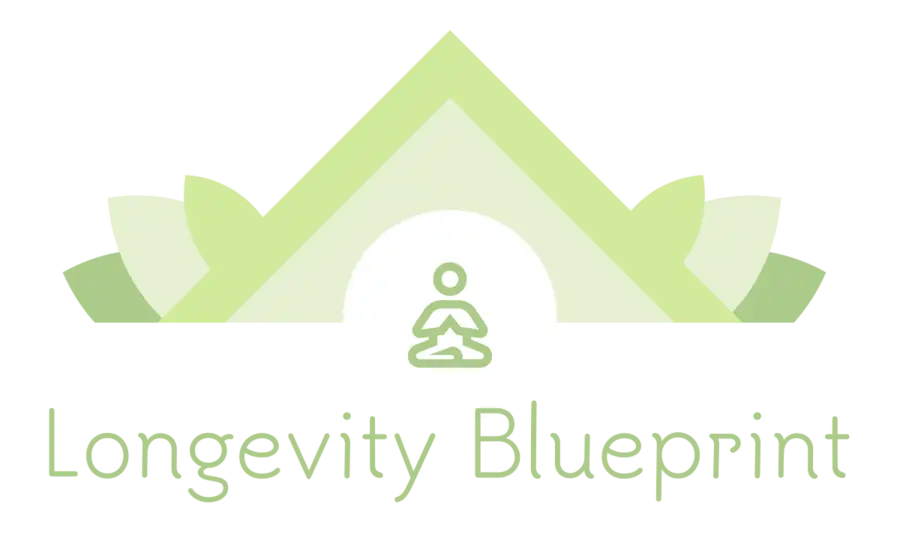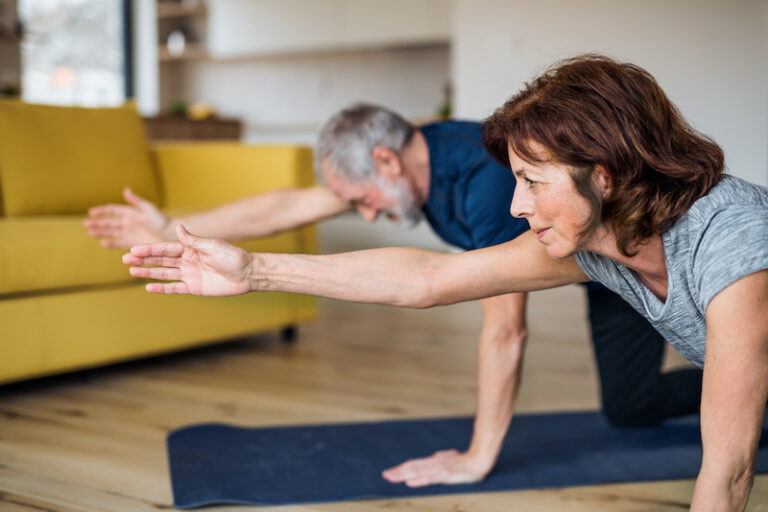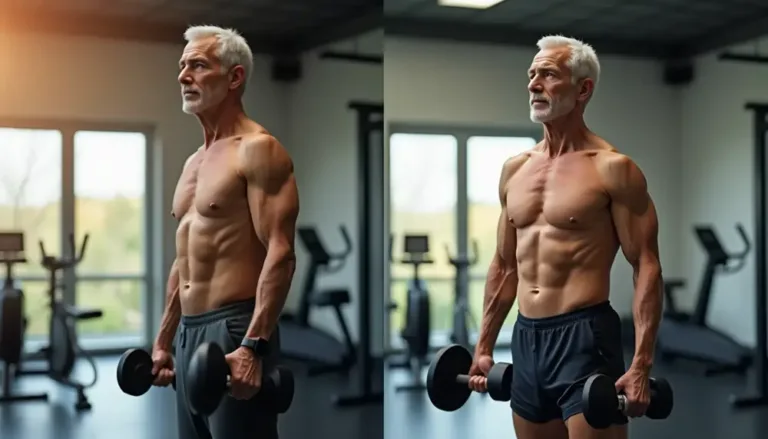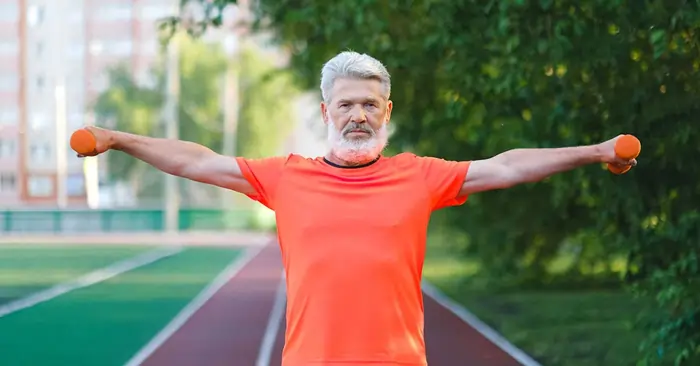The Truth About Cardiovascular Aging: How Much Exercise You Actually Need
 The right amount of exercise could make you biologically nine years younger. This isn’t science fiction – research on cardiovascular aging and physical activity proves it. Studies show that better physical fitness can reduce your risk of death by an impressive 44%.
The right amount of exercise could make you biologically nine years younger. This isn’t science fiction – research on cardiovascular aging and physical activity proves it. Studies show that better physical fitness can reduce your risk of death by an impressive 44%.
Exercise plays a vital role in heart health, but many people don’t know exactly how much they need. A weekly routine of 150 minutes of moderate exercise can substantially lower cardiovascular disease risk. Adults over 40 could prevent 110,000 deaths annually by simply increasing their physical activity levels.
This complete guide explores the science behind cardiovascular aging and reveals the exact amount of exercise you need. You’ll discover practical strategies to maintain a healthy heart. Whether you’re starting your fitness trip or enhancing your current routine, you’ll learn how to effectively curb age-related cardiovascular changes.
Understanding Cardiovascular Aging: What Happens to Your Heart

Image Source: Dreamstime.com
Your heart changes predictably with age. Your lifestyle choices play a huge role in how fast your cardiovascular system ages. You can take steps to keep your heart healthy throughout life by understanding these changes.
The natural timeline of heart changes
The heart goes through natural structural and functional changes as you age. People over 65 develop stiffer heart muscle in their left ventricle. This makes it harder to pump oxygen-rich blood effectively [1]. The heart walls get thicker too. Despite the heart’s overall size increasing, the chamber holds less blood [1].
Your heart’s electrical system doesn’t stay the same either. The natural pacemaker (sinoatrial node) loses cells over time. This often results in a slightly slower heart rate [1]. Heart valves become thicker and less flexible. These changes sometimes create heart murmurs [1].
These changes start early in life and progress slowly. Heart disease affects about 54% of people aged 40-59. The numbers rise to 78% for ages 60-79, and 90% for those above 80 [2].
How sedentary lifestyle accelerates aging
Your everyday habits can speed up how fast your heart ages. New research shows that sitting more than 10.6 hours daily raises your risk of heart failure and cardiovascular death. This is a big deal as it means that even regular exercise won’t completely protect you [3].
Sitting too much changes your body at the cellular level. It reduces lipoprotein lipase activity within just 24 hours [4]. This enzyme helps process fats. Too much sitting also raises glucose levels and causes insulin resistance. It increases inflammation too [5].
You can lower your heart failure risk by 15% by swapping just 30 minutes of sitting with any physical activity. This change also cuts cardiovascular mortality by 10% [3]. Light activity helps too – it reduces heart failure risk by 6% and mortality by 9% [3].
Measuring your heart’s biological age
Your heart might be older or younger than your actual age. Heart age calculators look at several risk factors to figure this out. These include your blood pressure, cholesterol levels, smoking status, diabetes, BMI, and family history [6].
The stakes are high. People with hearts biologically seven years older than their actual age face 62% higher risk of death from all causes. Their risk of major heart problems jumps by 92% [7]. The good news? Having a heart seven years younger than your age cuts mortality risk by 14% [7].
You can check your heart’s biological age through different tools. The American College of Cardiology’s Atherosclerotic Cardiovascular Disease Risk Calculator and the Reynolds Risk Score are popular options [6].
Resources:
- American Heart Association: heart.org
- National Institute on Aging: nia.nih.gov/health/heart-health
- Mayo Clinic: mayoclinic.org/healthy-lifestyle/healthy-aging
The Science Behind Exercise and Heart Health

Image Source: Mangiarelli Rehabilitation
Exercise reshapes your cardiovascular system down to the cellular level. It works almost like a “polypill” that tackles multiple aspects of heart health all at once [8]. Learning about these mechanisms shows why staying physically active serves as one of our best defenses against cardiovascular aging.
How exercise affects heart muscle strength
Your heart gets stronger every time you work out. The beneficial stress makes it more powerful over time. Regular workouts increase your heart’s chamber size and condition the cardiac muscle. This lets your heart pump blood more effectively without working as hard [9]. The conditioning also helps your heart deliver oxygen-rich blood throughout your body and raises oxygen levels in your bloodstream [10].
Your cardiac engine gets fine-tuned through exercise by:
- Making muscles better at extracting oxygen from blood
- Cutting down stress hormones that strain the heart
- Lowering heart rate and blood pressure just as beta-blocker medication does [11]
Effect on blood vessels and circulation
Scientists call it “mechanotransduction” – the physical forces from increased blood flow and pressure during activity directly change your blood vessels [8]. These forces trigger crucial changes in your vascular system.
Blood flow to muscles increases up to 25% with regular exercise. This encourages blood vessels to expand and become more flexible [9]. Your body also makes more nitric oxide, a molecule that keeps arterial linings smooth while relaxing artery walls to prevent spasms [12].
The most remarkable change happens as your body grows new blood vessels. Regular physical activity expands your network of capillaries, which helps deliver oxygen better and remove waste more effectively [12].
The telomere connection: cellular aging and cardio
Telomeres act as protective caps at chromosome ends and work as biological markers of aging. Cells become less functional and eventually die as telomeres get shorter with age [13]. Studies show that endurance athletes have higher telomerase activity and their telomeres shorten more slowly compared to inactive people [13].
Aerobic exercise lasting six months or longer slows down telomere shortening by a lot [13]. This happens because exercise helps boost antioxidant activity and reduces inflammation throughout your body [13].
Resources:
- American Heart Association: heart.org
- National Institute of Health: nih.gov/health-information
- Mayo Clinic: mayoclinic.org/healthy-lifestyle/fitness
How Much Exercise Do You Really Need?
Image Source: ResearchGate
The good news about exercise comes as a pleasant surprise: you don’t need as much as you might think to get most important heart health benefits.
The minimum effective dose for heart benefits
Your heart can benefit from even the smallest amount of exercise, which might surprise you. Research shows that moving just 15 minutes each day makes a real difference to your heart’s health [14]. The biggest improvements happen when inactive people start moving at all [15].
Your heart works best when you do at least 150 minutes of moderate activity like brisk walking or 75 minutes of vigorous exercise like running each week [16]. All the same, moving even a little helps—people who exercised just a bit lowered their death risk by 20% [17].
Moderate vs. high-intensity exercise effects
Both workout intensities help your heart differently. Moderate exercise—where you can chat while breathing heavily—helps lower blood pressure for up to 13 hours afterward [15]. Regular moderate exercise can reduce systolic blood pressure by 5-8 points [15].
High-intensity interval training (HIIT) alternates between intense bursts and recovery periods and gives similar benefits in less time. Studies show HIIT works especially well to boost heart rate variability, which indicates good cardiovascular health [1]. It also helps improve social aspects like getting back to work and feeling confident again [18].
Frequency matters: daily vs. weekly exercise
Being a “weekend warrior” could work just as well as daily exercise. Research following nearly 90,000 adults found that people exercising on just one or two days had similar protection against heart attacks, strokes, and heart failure as those who spread their workouts through the week [19].
Meeting your weekly exercise goals matters more than when you do it. You can split up your activity however it fits your schedule—whether you prefer 30-minute sessions five days a week or longer weekend workouts [19].
Resources:
- American Heart Association: heart.org
- U.S. Department of Health: health.gov/paguidelines
- Mayo Clinic: mayoclinic.org/healthy-lifestyle/fitness
Creating Your Anti-Aging Cardiovascular Routine

Image Source: Bethesda Health Group
A heart-healthy exercise routine begins with a clear understanding of your starting point and goals. Your cardiovascular training success depends on taking the right steps based on your fitness level.
Assessing your current fitness level
You should know your baseline before starting any exercise program. Your resting heart rate gives you a simple way to check your cardiovascular health. Lower rates usually mean better fitness. Most adults have a normal resting heart rate of 60-100 beats per minute. Active people might have rates as low as 40 [20].
Field tests can give you a full picture of your cardiovascular fitness. The talk test works really well – you’re at the right intensity when you can speak 4-5 words between breaths [21].
Here are some structured tests you can try:
- The 3-minute step test (using a 12-inch step)
- The Rockport 1-mile walk test
- The 20-meter shuttle run (great for measuring cardiorespiratory endurance) [22]
Building a progressive cardio plan
Start from your current level, not where you wish you were. Beginners should build an aerobic base by moving steadily for 20-30 minutes at moderate intensity [23]. The duration should increase before you boost intensity.
A good cardio plan has variety in three intensity zones [4]:
- Low-moderate intensity (easy, conversational pace)
- Moderate intensity (enough to sweat)
- High-intensity intervals (quick bursts with short rest periods)
The minimum effective dose works well – 30 minutes of brisk walking 3-4 times weekly can boost cardiovascular fitness by 5-15% over 12 weeks, whatever your age, gender or ethnicity [24].
Incorporating strength training for complete heart health
Strength training with cardio brings powerful benefits to your heart. Just 30-60 minutes of muscle-strengthening exercises weekly can cut early death risk by 10-17% [25].
Resistance training helps improve several heart-related factors:
- Lower blood pressure (about 4/2 mmHg reduction in adults over 40) [5]
- Better glucose control (0.34% improvement in A1C for older adults with diabetes) [5]
- Better blood vessel function (2-3% increase in reactivity) [5]
Body-weight exercises that work all major muscle groups make a great start. Do 8-12 repetitions for 1-3 sets, twice weekly [26].
Sample weekly routines for different age groups
Ages 40-50:
Mix 5 days of cardio (20-40 minutes) with weight training. Combine moderate sessions with higher-intensity interval training [27].
Ages 50-60:
Do 4-6 cardio sessions weekly (20-40 minutes) plus strength training 2 days per week [27].
Ages 60+:
Three days of moderate cardio plus balance activities work best. Split your time between 80% moderate aerobic activity and 20% resistance exercises [21].
Resources:
- American Heart Association: heart.org
- National Institute on Aging: nia.nih.gov/health
- American College of Sports Medicine: acsm.org
Conclusion
Scientific research proves that physical activity is our strongest defense against cardiovascular aging. Studies consistently show that modest amounts of exercise – just 150 minutes weekly – can make your heart biologically nine years younger.
Any movement counts toward better health. Your heart benefits more from short walks or simple strength training exercises than staying inactive. Different exercise intensities throughout the week maximize cardiovascular benefits and keep your routine engaging and eco-friendly.
The journey to a healthier heart through exercise is clear and achievable. You can spread activities throughout the week or concentrate them on weekends. Consistency matters more than perfection, so build habits that work with your schedule and fitness level.
A healthy heart doesn’t need extreme measures – it needs regular attention and care through appropriate physical activity. You can start where you are and progress at your own pace. Small improvements deserve celebration along the way.
Helpful Resources:
- American Heart Association (heart.org)
- National Institute on Aging (nia.nih.gov/health)
- Centers for Disease Control and Prevention (cdc.gov/physicalactivity)
FAQs
Q1. What type of exercise is most beneficial for aging adults?
While various exercises are beneficial, a combination of aerobic activities and strength training is ideal for aging adults. Moderate-intensity activities like brisk walking, cycling, or swimming for 150 minutes per week, along with twice-weekly strength training sessions, can significantly improve cardiovascular health and overall fitness.
Q2. How can I effectively reverse cardiovascular aging?
To reverse cardiovascular aging, focus on consistent exercise, a heart-healthy diet, and stress management. Aim for at least 150 minutes of moderate-intensity aerobic activity weekly, incorporate strength training, eat a diet rich in whole foods and plant-based options, and practice relaxation techniques. Regular check-ups and managing risk factors like high blood pressure and cholesterol are also crucial.
Q3. Can regular exercise make my heart biologically younger?
Yes, research shows that regular physical activity can make your heart biologically younger. Studies indicate that consistent exercise can reduce your heart’s biological age by up to nine years, significantly lowering the risk of cardiovascular disease and improving overall heart health.
Q4. Is it better to exercise daily or concentrate workouts on weekends?
Both daily exercise and concentrated weekend workouts can be effective for heart health. Research suggests that achieving your weekly total of physical activity is more important than when you exercise. Whether you choose 30-minute sessions five days a week or longer weekend workouts, consistency in reaching your weekly exercise goals is key.
Q5. How much exercise is needed to see cardiovascular benefits?
Even small amounts of exercise can provide significant cardiovascular benefits. As little as 15 minutes of daily movement can make a meaningful difference to your heart health. For optimal benefits, aim for at least 150 minutes of moderate-intensity activity or 75 minutes of vigorous activity weekly. Remember, any increase in physical activity from a sedentary lifestyle will yield positive results for your heart.
References
[1] – https://pmc.ncbi.nlm.nih.gov/articles/PMC6069078/
[2] – https://www.rgare.com/knowledge-center/article/cardiovascular-aging-causes-and-intervention
[3] – https://www.acc.org/About-ACC/Press-Releases/2024/11/15/16/33/Sitting-Too-Long-Can-Harm-Heart-Health-Even-for-Active-People
[4] – https://www.verywellfit.com/cardio-workout-program-weight-loss-1230810
[5] – https://news.umich.edu/weight-training-can-improve-heart-disease-risk-factors-in-just-30-minutes-a-week/
[6] – https://my.clevelandclinic.org/health/articles/17085-heart-risk-factor-calculators
[7] – https://www.technologynetworks.com/tn/news/ai-helps-to-calculate-the-hearts-biological-age-397921
[8] – https://pmc.ncbi.nlm.nih.gov/articles/PMC5880156/
[9] – https://www.health.harvard.edu/heart-health/the-many-ways-exercise-helps-your-heart
[10] – https://www.nhlbi.nih.gov/health/heart/physical-activity/benefits
[11] – https://www.hopkinsmedicine.org/health/wellness-and-prevention/exercise-and-the-heart
[12] – https://www.health.harvard.edu/heart-health/exercise-and-your-arteries
[13] – https://pmc.ncbi.nlm.nih.gov/articles/PMC8879766/
[14] – https://www.health.harvard.edu/heart-health/how-much-exercise-is-optimal-for-heart-health
[15] – https://www.health.harvard.edu/heart-health/updated-exercise-guidelines-showcase-the-benefits-to-your-heart-and-beyond
[16] – https://www.heart.org/en/healthy-living/fitness/fitness-basics/aha-recs-for-physical-activity-in-adults
[17] – https://www.heart.org/en/news/2019/02/22/for-the-best-health-does-the-intensity-of-your-workout-matter
[18] – https://www.nature.com/articles/s41598-023-40589-5
[19] – https://www.health.harvard.edu/heart-health/are-you-an-everyday-exerciser-or-a-weekend-warrior
[20] – https://www.heart.org/en/healthy-living/fitness/fitness-basics/target-heart-rates
[21] – https://www.health.harvard.edu/heart-health/the-best-heart-healthy-workouts-for-your-60s-70s-and-80s
[22] – https://traineracademy.org/cpt-textbook/cardiorespiratory-fitness-assessments/
[23] – https://www.acefitness.org/fitness-certifications/ace-answers/exam-preparation-blog/4831/physiological-assessments-cardiovascular-assessments/?srsltid=AfmBOor9xNUjjc0uKbhSx18Pp7f8JSPCjuHQHJ8mGAtfsNs8dvf-YTPK
[24] – https://pmc.ncbi.nlm.nih.gov/articles/PMC6239007/
[25] – https://www.health.harvard.edu/exercise-and-fitness/stronger-body-healthier-heart
[26] – https://www.mayoclinic.org/healthy-lifestyle/fitness/in-depth/strength-training/art-20046670
[27] – https://www.hancockhealth.org/2022/05/cardio-for-every-age/





